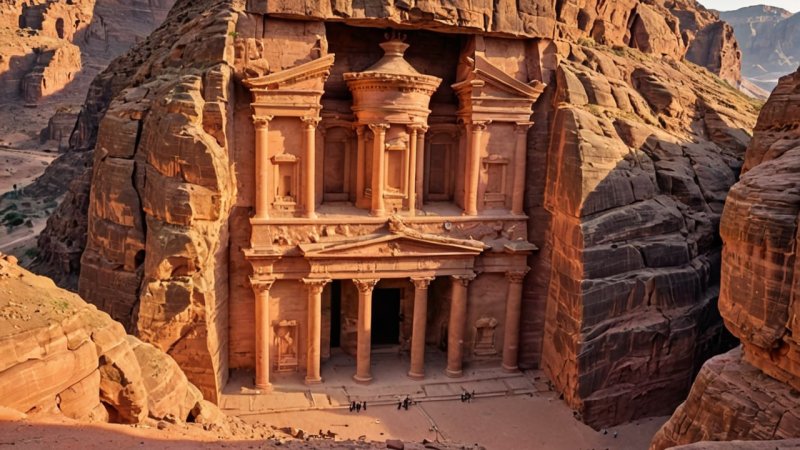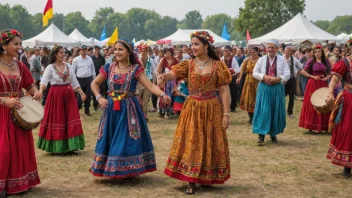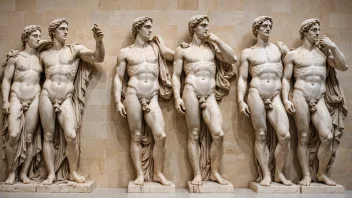Petra, a UNESCO World Heritage Site, is renowned for its rock-cut architecture and water conduit system, drawing countless travelers each year. To delve deeper into the historical and cultural significance of this ancient city, we engaged in a fictional interview with Dr. Laila Al-Mansoori, a hypothetical archaeologist and historian specializing in Middle Eastern ancient civilizations.
The Enchantment of Petra
Interviewer: Dr. Al-Mansoori, thank you for joining us today! To start, could you share what makes Petra such a unique destination for travelers?
Dr. Al-Mansoori: Absolutely! Petra is often referred to as the "Rose City" due to the color of the stone from which it is carved. Its unique architectural style, particularly the intricate facades, is a testament to the Nabataean civilization's ingenuity. The city served as a vital trade hub, connecting various cultures and is a symbol of engineering prowess, especially with its water management system. Travelers are not just visiting a site; they are stepping into a living history, rich in stories, myths, and archaeological significance.
Historical Insights
Interviewer: What can you tell us about the historical context of Petra?
Dr. Al-Mansoori: Petra was established as early as the 5th century BC and flourished during the Nabataean kingdom, which became known for its wealth from trade routes. The city’s strategic location allowed it to grow into a thriving center for commerce. The Nabataeans were skilled traders and artisans, which is evident in their impressive rock-cut architecture. However, they were also adept in water conservation techniques, enabling them to thrive in the arid climate of southern Jordan.
Unveiling Hidden Gems
Interviewer: Are there any lesser-known sites within Petra that you think travelers should prioritize?
Dr. Al-Mansoori: Certainly! While the Treasury, or Al-Khazneh, is the most iconic structure, I encourage visitors to explore sites like the Monastery (Ad Deir), which is often less crowded and just as stunning. Additionally, the High Place of Sacrifice offers breathtaking views of the surrounding landscape and a glimpse into the rituals of the Nabataeans. The Royal Tombs also tell fascinating stories about the city’s elite and their burial practices.
Travel Tips for Petra
Interviewer: What travel tips would you suggest for those planning to visit Petra?
Dr. Al-Mansoori: First and foremost, start your adventure early in the morning to beat the heat and the crowds. Wear comfortable shoes, as exploring Petra involves a lot of walking on uneven terrain. Consider hiring a local guide who can provide insights into the history and significance of the sites you're visiting. Lastly, don’t forget to bring plenty of water and snacks; staying hydrated is vital in the desert climate.
The Future of Petra
Interviewer: With the rise in tourism, how do you see the preservation of Petra being managed in the future?
Dr. Al-Mansoori: Preservation is a significant concern. The increasing number of visitors can lead to wear and tear on the structures. It’s essential for both the government and organizations dedicated to heritage conservation to implement sustainable tourism practices. This includes limiting the number of visitors in certain areas, educating tourists on responsible behavior, and investing in restoration projects to maintain the site’s integrity.
Unique Experiences
Interviewer: Lastly, what unique experiences do you think travelers should seek out when visiting Petra?
Dr. Al-Mansoori: I recommend experiencing Petra by night if possible. The "Petra by Night" tour is magical, where the path leading to the Treasury is illuminated by thousands of candles. It creates an enchanting atmosphere that transports you back in time. Additionally, consider engaging with local Bedouin communities to learn about their traditions and how they have adapted alongside the ruins of Petra.
In conclusion, Petra is not just a collection of ancient structures; it is a vibrant tapestry of history, culture, and human ingenuity. Through the fictional insights of Dr. Laila Al-Mansoori, we gain a deeper appreciation for Petra’s significance and what makes it a must-visit destination for any traveler.






